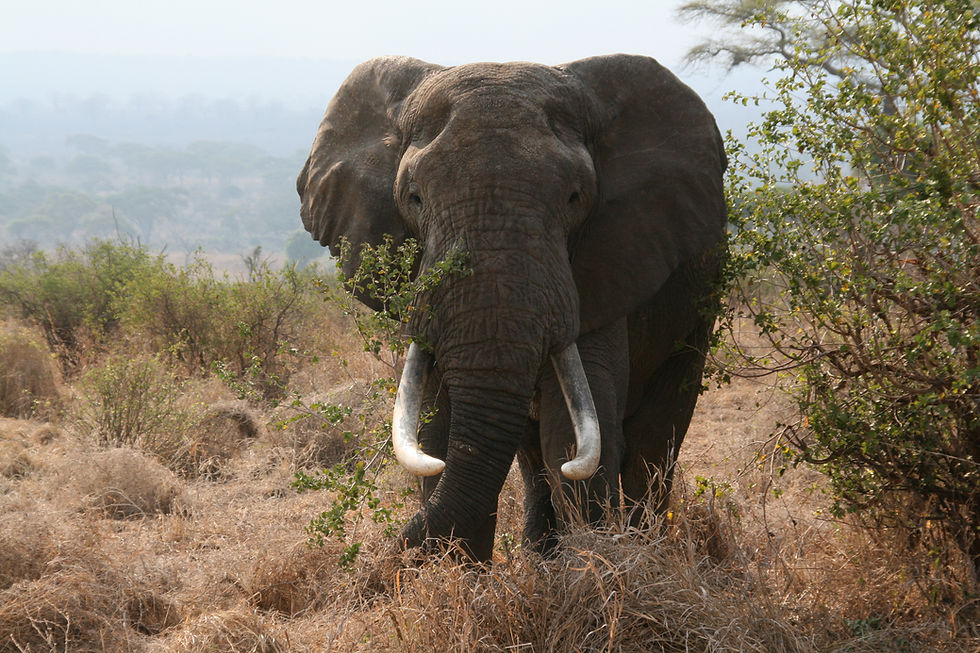
CREATURE-PEDIA
African Elephant




Fun Fact
The African elephant has 140,000 muscles in their trunks.
Although there are 2 species of elephants in the world (the African elephant and the Asian elephant), the African bush elephant is the largest species of elephant and the largest land animal in the world, on average, males are 10.8 feet tall at the shoulder and weigh up to 5.5 tonnes (12,130 lb), while females are much smaller at 9.2 feet tall and weigh up to 3.7 tonnes (8,160 lb). The most characteristic features of African elephants are their very large ears, which they use to radiate excess heat, and their trunk, a nose and an extension of the upper lip with two opposing extensions, or "fingers" at the end of it (in contrast to the Asian elephant, which only has one). The trunk is used for communication and handling objects and food. African elephants also have bigger tusks, large modified incisors that grow about 7 inches a year throughout an elephant's life. They occur in both males and females and are used in fights and for marking, feeding, and digging. When males are fully adults, they mostly travel alone or live in bachelor herds (which means living in a herd with other males), while females and their calves live in matriarchal herds led by the oldest female, known as the matriarch. Later, males lead a solitary life, approaching the female herds only during the mating season. Nevertheless, elephants do not get too far from their families and recognize them when re-encountered. Sometimes, several female herds can blend for a period of time, reaching even hundreds of individuals. The matriarch decides the route and has shown the other members of the herd all the water sources she knows, which the rest can memorize for the future. Like all species of elephant, the male African bush elephant experiences musth, a period of extreme aggression accompanied with high testosterone levels. In one case a young male African bush elephant has been witnessed killing a rhinoceros during musth. Mating happens when the female becomes receptive, an event that can occur anytime during the year. When she is ready, she starts emitting infrasounds to attract the males, sometimes from kilometers away. The adult males start arriving at the herd during the following days and began fighting, causing some injuries and even broken tusks. The female shows her acceptance of the victor by rubbing her body against his. They mate, and then both go their own way. After 22 months of gestation (the longest among mammals), the female gives birth to a single 90-cm-high calf which weighs more than 100 kg. The baby feeds on the mother's milk until the age of five, but also eats solid food from as early as six months old. Just a few days after birth, the calf can follow the herd by foot. While the species is designated as vulnerable, conditions vary somewhat by region between East and Southern Africa. The populations in Southern Africa are thought to be increasing at 4% per year whilst other populations are decreasing.
Fun Fact
Elephants have the longest pregnancy, up to 22 months (like about 2 years).
Did You Know?
Every elephant herd is led by the oldest female, called the matriarch

